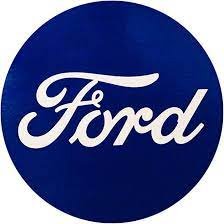The Power of Colors: Unleashing the Psychology of Color in Branding
Color Psychology in Branding
Colors have the remarkable ability to evoke emotions, capture attention, and leave a lasting impression. When it comes to branding your small business or startup, understanding the psychology of color can be a game-changer. In this blog post, I'll explore the power of colors in branding and how they can impact customer perception and engagement.
Red
The color of passion and energy, perfect for creating a sense of urgency or excitement.
Brands with red as their primary color: Coca-Cola, McDonald's, Netflix, KFC, Target, YouTube, Ferrari, Levi's, Canon, Nintendo, CNN, Adobe, American Express, Budweiser
Blue
Symbolizing trust, dependability, and professionalism, it's a popular choice for businesses aiming to establish credibility and spark innovation.
Brands with blue as their primary color: Facebook, IBM, HP, Ford, American Express, Visa, Pepsi, Samsung, Dell, Intel, GE, Oral-B, PayPal, Twitter, LinkedIn
Yellow
Associated with optimism and happiness, it can grab attention and inspire positivity.
Brands with yellow as their primary color: McDonald's, Best Buy, Shell, Ferrari, DHL, Nikon, Hertz, Post-it, Sprint, Caterpillar, National Geographic, Nikon, Subway, Ikea, Lipton
Green
Symbolizing freshness, growth, health, and nature, it's often chosen by businesses with an eco-friendly or sustainable focus.
Brands with green as their primary color: Starbucks, Android, Land Rover, Tropicana, John Deere, Holiday Inn, BP, 7-Eleven, Animal Planet, Whole Foods Market, Heineken, Spotify, Sprite, Tic Tac, Subway
Purple
Represents luxury, creativity, and elegance, making it ideal for businesses aiming to convey sophistication.
Brands with purple as their primary color: Cadbury, Hallmark, Yahoo!, Twitch, Crown Royal, Syfy, Taco Bell, FedEx, Ben & Jerry's, Welch's, Milka
Orange
Radiating enthusiasm and creativity, it can evoke a sense of adventure and playfulness.
Brands with orange as their primary color: Amazon, Fanta, Nickelodeon, Harley-Davidson, Hootsuite, The Home Depot, SoundCloud, Payless, TNT, Penguin Books, JBL
Pink
Often associated with femininity, romance, and youthfulness, it can appeal to specific target audiences.
Brands with pink as their primary color: Barbie, Victoria's Secret, T-Mobile, Lyft, Cosmopolitan, Benefit Cosmetics, Hello Kitty, Baskin-Robbins, Dunkin' Donuts, Pepto-Bismol, Maybelline, Huda Beauty, Stila, Too Faced
Black & White
Symbolizing power, elegance, and authority, black can create a sense of sophistication and exclusivity. Signifying purity, simplicity, and minimalism, white can evoke a clean and modern brand image.
Brands with black as their primary color: Nike, Adidas, Chanel, Apple, Amazon, Gucci, Louis Vuitton, Prada, Yves Saint Laurent, Calvin Klein, Ray-Ban, Spotify, The New York Times, BMW
Multicolor
Using multiple colors can convey diversity, vibrancy, and playfulness, perfect for brands seeking a dynamic image.
Brands with multiple primary colors: Google, eBay, Microsoft, Instagram, NBC
Color Combinations
Color is a critical aspect of branding, and using multiple colors in combination can help to create a unique brand identity and make it more visually appealing. The way different colors work together can convey a range of emotions and meanings, and choosing the right color combinations is essential to achieve a cohesive and effective brand image.
One of the most popular and effective color combinations used in branding is blue and white. Blue is associated with trust, professionalism, and reliability, while white is clean, pure, and minimalist. The combination of these two colors creates a sense of calm, dependability, and simplicity, making it perfect for brands in the healthcare, finance, and technology industries. (Blue Honey Rose employs a suite of logos, but our primary brand color is a very calming, and unmistakably southern blue.) Another popular combination is red and yellow, which is commonly used in fast-food chains such as McDonald's and Burger King. Red is associated with energy, excitement, and passion, while yellow is associated with happiness, optimism, and friendliness. The combination of these two colors creates a sense of urgency and stimulates appetite, making it perfect for brands in the food industry.
Example color combos pulled from Erica’s design career:
Yellow & Gray:
cheerful, optimistic, modern
Red & Black:
bold, edgy, modern
Pink & Gray:
romantic, feminine, modern
Red & Yellow:
energetic, playful,
attention-grabbing
Black & White:
sophisticated, timeless, elegant
Cultural Color Palette Considerations
Color is not only influenced by personal preference, but it obviously also has cultural significance. The perception of color varies greatly across different cultures, which makes it an essential consideration when designing a brand identity that will be used globally. For instance, in the West, white is often associated with purity, while in some Asian countries such as China and Japan, it is the color of mourning and death. Black, which is commonly associated with mourning in the West, is considered a positive color in many African cultures, symbolizing prosperity and fertility. In Hinduism, red is a sacred and pure color, while in some Middle Eastern countries, it is associated with evil and danger.
It's crucial to consider the cultural background of a target audience when choosing color schemes for a brand identity. Companies need to research the cultural associations with different colors in the regions they wish to operate in. It's also important to be aware of any cultural sensitivities that could affect the use of certain colors. For example, it would be inappropriate to use the color red in branding a product in a culture where it's considered unlucky or associated with negative events. By being aware of these cultural differences and sensitivities, companies can avoid any misunderstandings or negative associations with their brand identity and ensure that it resonates positively with their target audience.
Remember, the key is to align your color choices with your brand's personality, values, and target audience. Consistency in color usage across your logo, website, marketing materials, and products creates a cohesive and memorable brand identity. That’s why we start each new client off with our Brand Clarity Workbook. It feels like taking a Buzzfeed quiz and helps us get to know you better.
At Blue Honey Rose, we understand the importance of colors in branding. Erica is fascinated by color theory and the psychology behind brand colors, and she can help you choose the perfect color palette that leaves a lasting impression on your target audience.























































